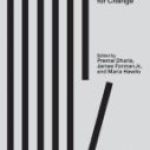DARE to Say No: Policing and the War on Drugs in Schools
 Author: Max Felker-Kantor
Author: Max Felker-Kantor
Publisher: University of North Carolina Press, 2024. 228 pages.
Reviewer: Andrew S. Baer | Winter 2025
Much of the national conversation about the history of policing involves elements of what might be termed hard power—how police departments employed promises of service, threats of punishment, and the use of force to expand their authority throughout the twentieth century and beyond. Yet as Max Felker-Kantor reveals in the “first full history” (2) of the school anti-drug programming known as DARE (Drug Abuse Resistance Education), police departments also wielded soft power to grow their reach and legitimate law enforcement solutions to problems perhaps best answered through public health or social welfare initiatives. Hoping DARE would connect “the drug war’s soft side of prevention with its hard side of aggressive enforcement” (34), proponents ultimately prioritized the interests of police power over the interests of drug users, school children, and parents nationwide. In the author’s final analysis, however, the soft power/hard power dichotomy remains misleading. In practice, Felker-Kantor concludes, “The two sides of the drug war—punishment and prevention—[…] were mutually constitutive” (181).
Since the program’s inception in 1983, nearly every American resident has encountered DARE in one way or another, either in their school classroom, their children’s classroom, or in popular culture. Indeed, through a combination of federal support, corporate partnerships, and a savvy “marketing machine,” DARE emerged as a veritable “cultural icon” by the 1990s (98). The DARE model involved incorporating police officers into public schools to lead a series of lessons designed to change student attitudes, not only about drugs, but about police as well. Yet changing student attitudes did little to change student behavior, as rates of drug use not only remained unaffected in most cases, but likely increased among “suburban youth” who encountered DARE in school (164). Designed to bolster conservative values of “zero tolerance, personal responsibility, family values, and respect for law and order” (141), DARE did nothing to address the “deeper social or economic conditions or structures that produced” drug abuse, crime, and violence in the first place (133). But it did help kids internalize police authority.
The officer-as-teacher model, sold as an effective means to reduce demand for illicit drugs, did far more to normalize the steady creep of policing into school and family life than it ever did to actually reduce drug use among American youth. As Felker-Kantor argues, “DARE was never solely about drug education but fundamentally about the expansion of police power and authority in America” (2). If DARE represents a failure in the fight against drug abuse, it proved a smashing success for police propaganda. “By the end of the 1990s,” Felker-Kantor writes, “DARE was as much a promotional machine for the police as it was an antidrug education program” (95).
Aside from its contribution to the historiography of American police, Dare to Say No is a model for how to conceptualize, organize, and execute the academic monograph. The book is original, compelling, and efficiently written, exhibiting a rare combination of academic rigor and accessibility of reading. It should remain the definitive historical account of DARE for the foreseeable future.
Andrew S. Baer is an Associate Professor of History at the University of Alabama at Birmingham.


